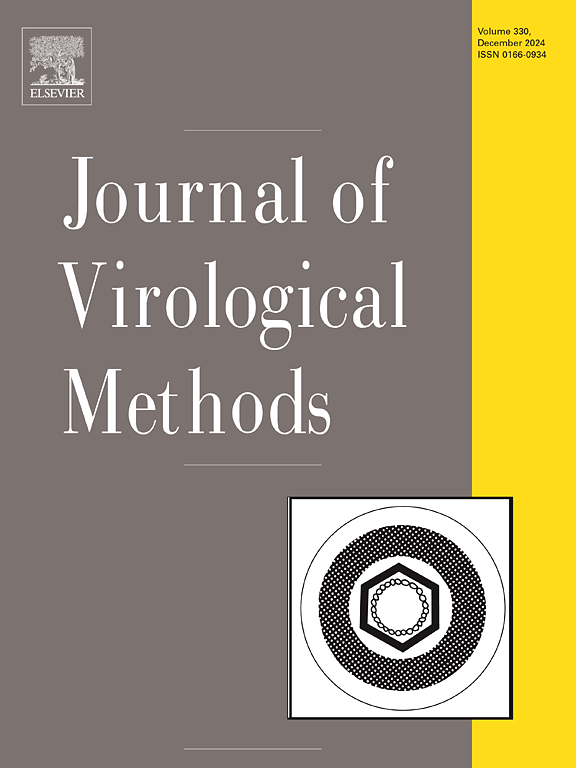Identification of bioinformatic pipelines for virus monitoring using nanopore sequence data: A systematic assessment
IF 1.6
4区 医学
Q3 BIOCHEMICAL RESEARCH METHODS
引用次数: 0
Abstract
Nanopore sequencing has proven to be a promising technique in virus surveillance efforts, especially due to the portability of its sequencers. In order to process the long, error-prone reads generated, specialised bioinformatic programs are required. These can be run automatically within pipelines so as to effectively provide decision makers with all relevant information about the molecular characteristics of a virus. The purpose of this systematic assessment was to identify pipelines that are suitable for virus surveillance programs using nanopore sequencing. Promising candidates were then compared in terms of their functional scope. Of 239 initial papers, 22 pipelines were tested, of which six were included in the final assessment. The four pipelines that were exclusively available offline were each missing individual downstream analysis steps considered in our assessment. The other two executed all steps. One of these was only available online and subject to a charge, while the other was freely available both online and offline. While we were able to identify two pipelines that are broadly suitable for virus surveillance using nanopore sequencing, we discovered two major shortcomings in this domain. None of the pipelines integrated basecalling, the initial step of data processing. In addition, there was no pipeline that was easy to install and provided all relevant analysis results with a single program call. We therefore see a need for the development of a pipeline that incorporates both aspects.
利用纳米孔序列数据进行病毒监测的生物信息学管道鉴定:系统性评估。
纳米孔测序已被证明是一种很有前途的病毒监测技术,特别是由于其测序仪的可移植性。为了处理产生的长而容易出错的读取,需要专门的生物信息学程序。这些可以在管道内自动运行,以便有效地向决策者提供有关病毒分子特征的所有相关信息。该系统评估的目的是利用纳米孔测序确定适合病毒监测项目的管道。然后比较有希望的候选人的功能范围。在239篇最初的论文中,对22条管道进行了测试,其中6条纳入了最终评估。在我们的评估中,我们考虑了四个离线可用的管道,每个管道都缺少单独的下游分析步骤。另外两个人执行所有步骤。其中一种只能在线上使用并需要付费,而另一种在线上和离线都可以免费使用。虽然我们能够确定两种广泛适用于使用纳米孔测序进行病毒监测的管道,但我们发现了该领域的两个主要缺点。所有的管道都没有集成基调用,数据处理的第一步。此外,没有易于安装的管道,并且通过单个程序调用提供所有相关的分析结果。因此,我们认为有必要发展一条包括这两个方面的管道。
本文章由计算机程序翻译,如有差异,请以英文原文为准。
求助全文
约1分钟内获得全文
求助全文
来源期刊
CiteScore
5.80
自引率
0.00%
发文量
209
审稿时长
41 days
期刊介绍:
The Journal of Virological Methods focuses on original, high quality research papers that describe novel and comprehensively tested methods which enhance human, animal, plant, bacterial or environmental virology and prions research and discovery.
The methods may include, but not limited to, the study of:
Viral components and morphology-
Virus isolation, propagation and development of viral vectors-
Viral pathogenesis, oncogenesis, vaccines and antivirals-
Virus replication, host-pathogen interactions and responses-
Virus transmission, prevention, control and treatment-
Viral metagenomics and virome-
Virus ecology, adaption and evolution-
Applied virology such as nanotechnology-
Viral diagnosis with novelty and comprehensive evaluation.
We seek articles, systematic reviews, meta-analyses and laboratory protocols that include comprehensive technical details with statistical confirmations that provide validations against current best practice, international standards or quality assurance programs and which advance knowledge in virology leading to improved medical, veterinary or agricultural practices and management.

 求助内容:
求助内容: 应助结果提醒方式:
应助结果提醒方式:


